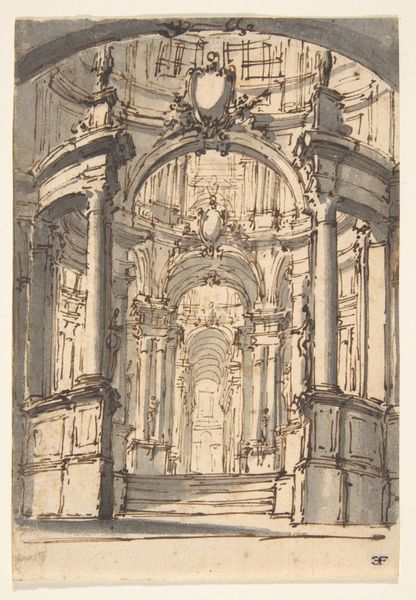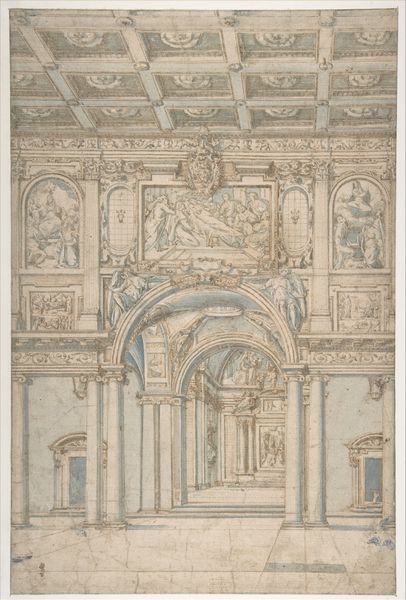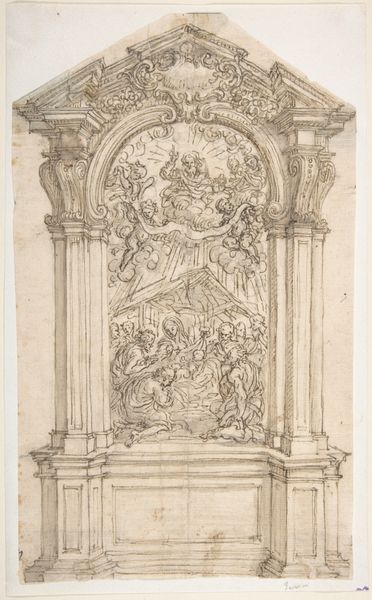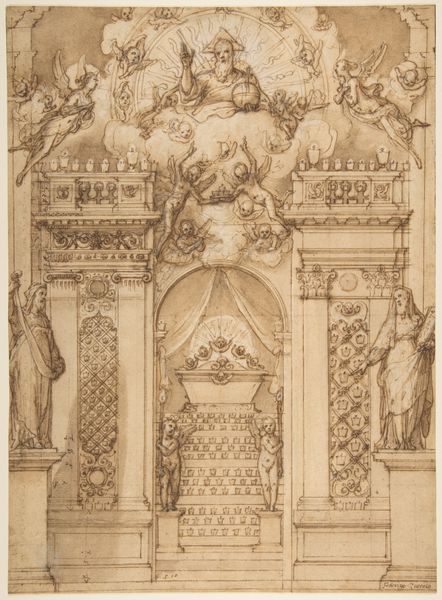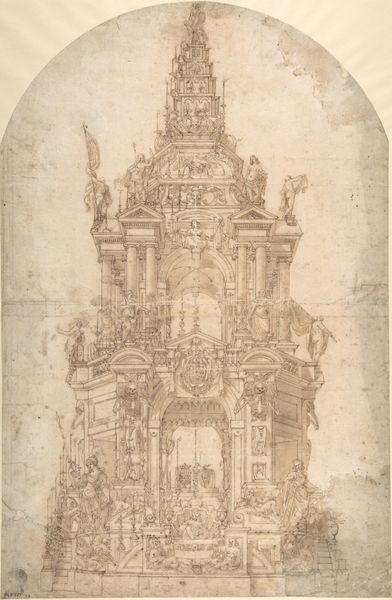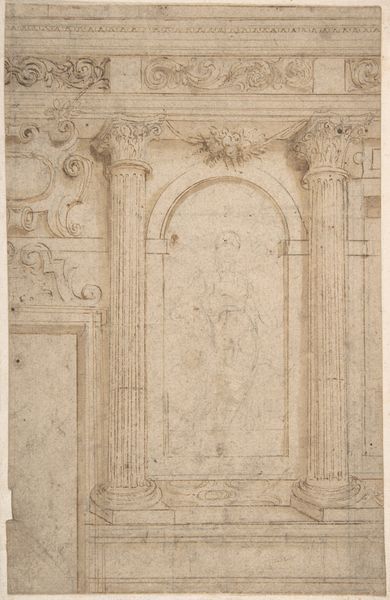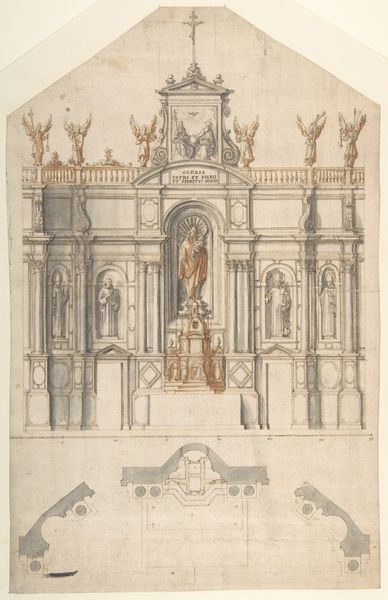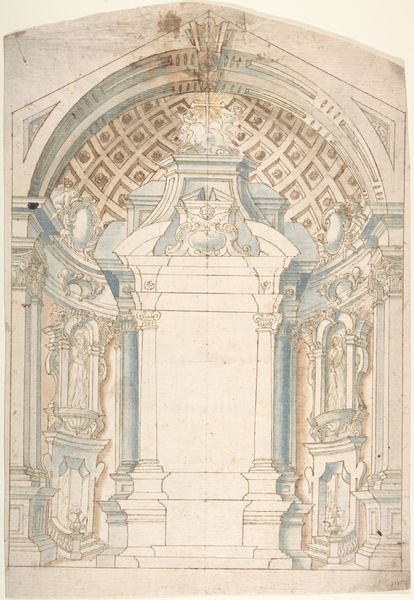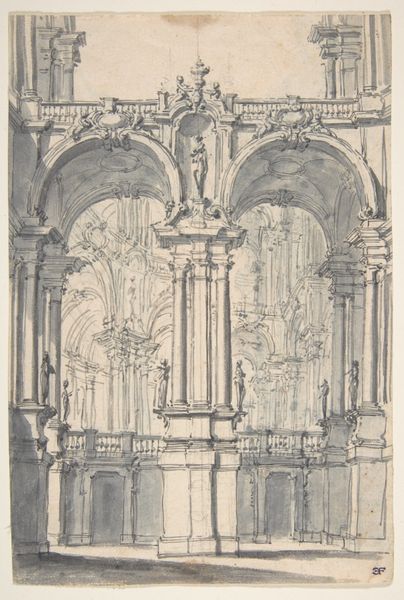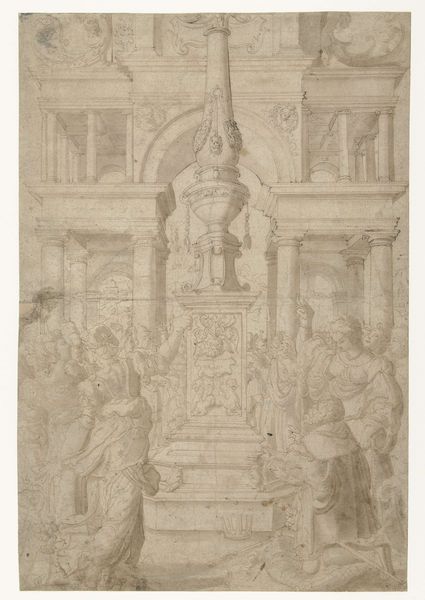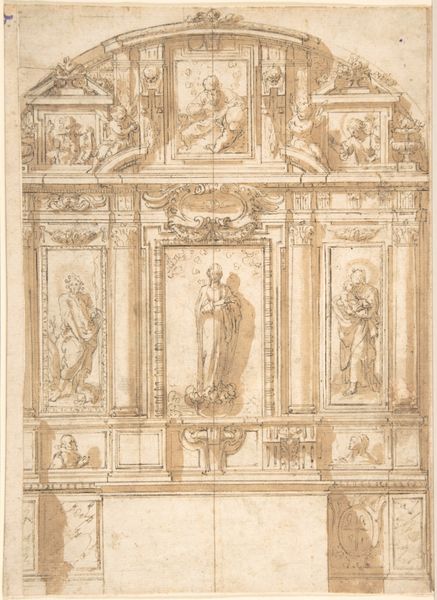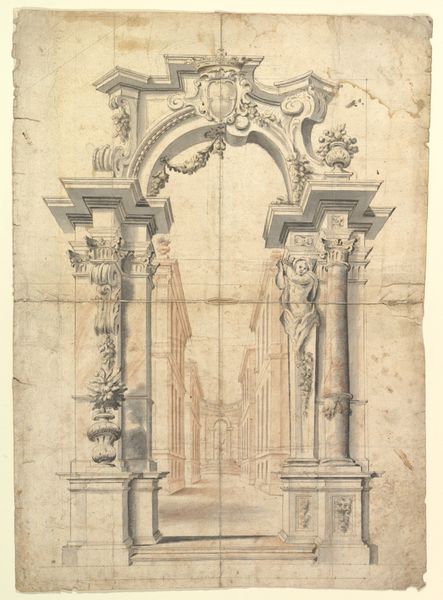
Design for a Stage Set (recto); Fragmentary Sketch of a Stage Set in Elevation (verso) 1698 - 1765
0:00
0:00
drawing, print, architecture
#
drawing
#
baroque
# print
#
cityscape
#
watercolor
#
architecture
Dimensions: 5-3/8 x 4 in. (13.7 x 10.2 cm)
Copyright: Public Domain
Curator: Here we have Giovanni Battista Natali III’s "Design for a Stage Set," likely created sometime between 1698 and 1765. It's a study in ink and watercolor wash. It's remarkable for its deft depiction of perspective. What strikes you initially? Editor: Well, just the sheer grandeur of the architecture, despite the monochrome palette. It has an almost haunting, theatrical presence. You can almost hear echoes in that open space. I wonder what narratives this stage set was built for. Curator: It’s intriguing to think about. Let’s consider its materiality: ink and watercolor, common materials, used to create this grand illusion. There's a contrast there, isn’t there? The readily available transformed into something transporting. It reflects the workshop practices and availability of materials for set design during the Baroque era. Editor: Absolutely. It raises questions about labor, too. Who were the artisans and laborers who built these sets from such drawings? What were their lives like? Stage design wasn't just about elite patronage; it depended on a whole ecosystem of workers. And what stories did the elite put on the stage, and what power dynamics did these reinforce? Were there plays that challenged the social hierarchy in the end? Curator: Fascinating questions. Natali's work serves not just as an artistic achievement but also as documentation. His detailed drawing method makes the labor clear, showcasing how meticulously these stage designs had to be crafted. We can really appreciate the skill involved in bringing architectural concepts to the stage using basic resources. Editor: I agree. When we situate this artwork in the context of performativity—of gender, of class, of power—then these sketches invite so many compelling questions. We see echoes of this sort of illusion in the constructedness of gender roles during that era as well. Curator: I'm struck by the way Natali’s design merges both artistry and practicality so clearly; each supporting beam, arch and support shows intent beyond decorative, reflecting its functional stage purpose as well. Editor: Ultimately, art is never detached from social and political currents, even in the realm of entertainment. This reminds us how deeply implicated artistic expression always is. Curator: I concur, bringing a wealth of information that is contained in even what seems like simple studies, reflecting the work and process itself to enrich appreciation.
Comments
No comments
Be the first to comment and join the conversation on the ultimate creative platform.


